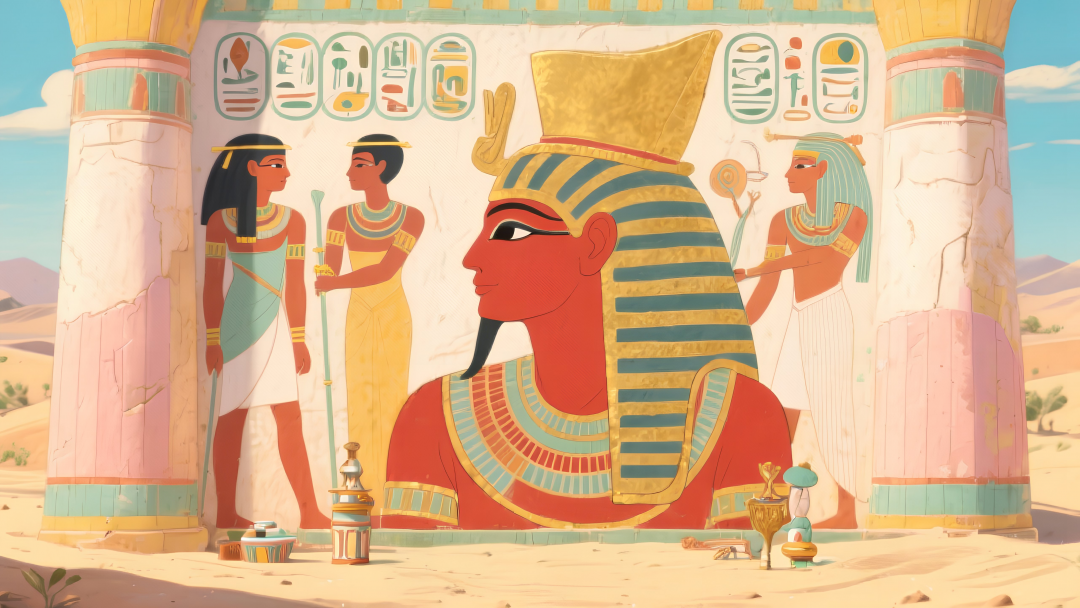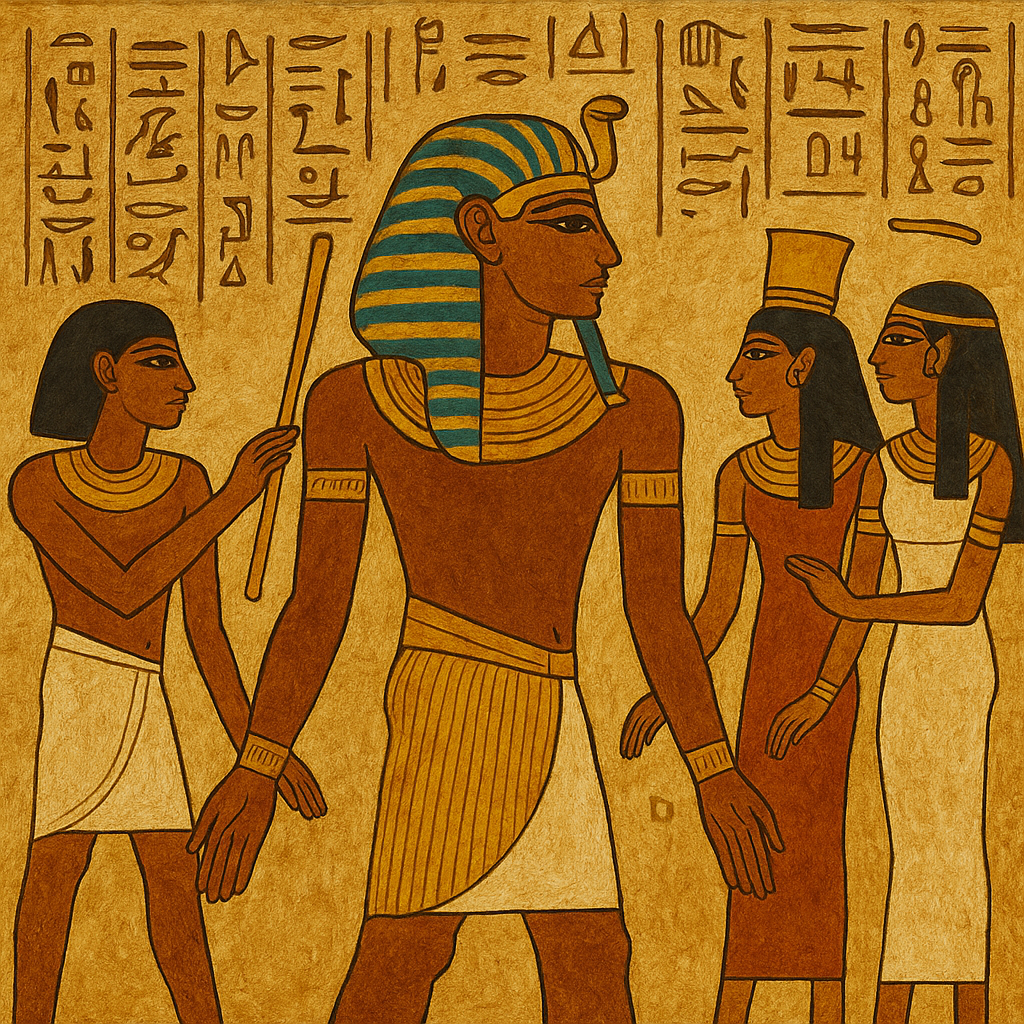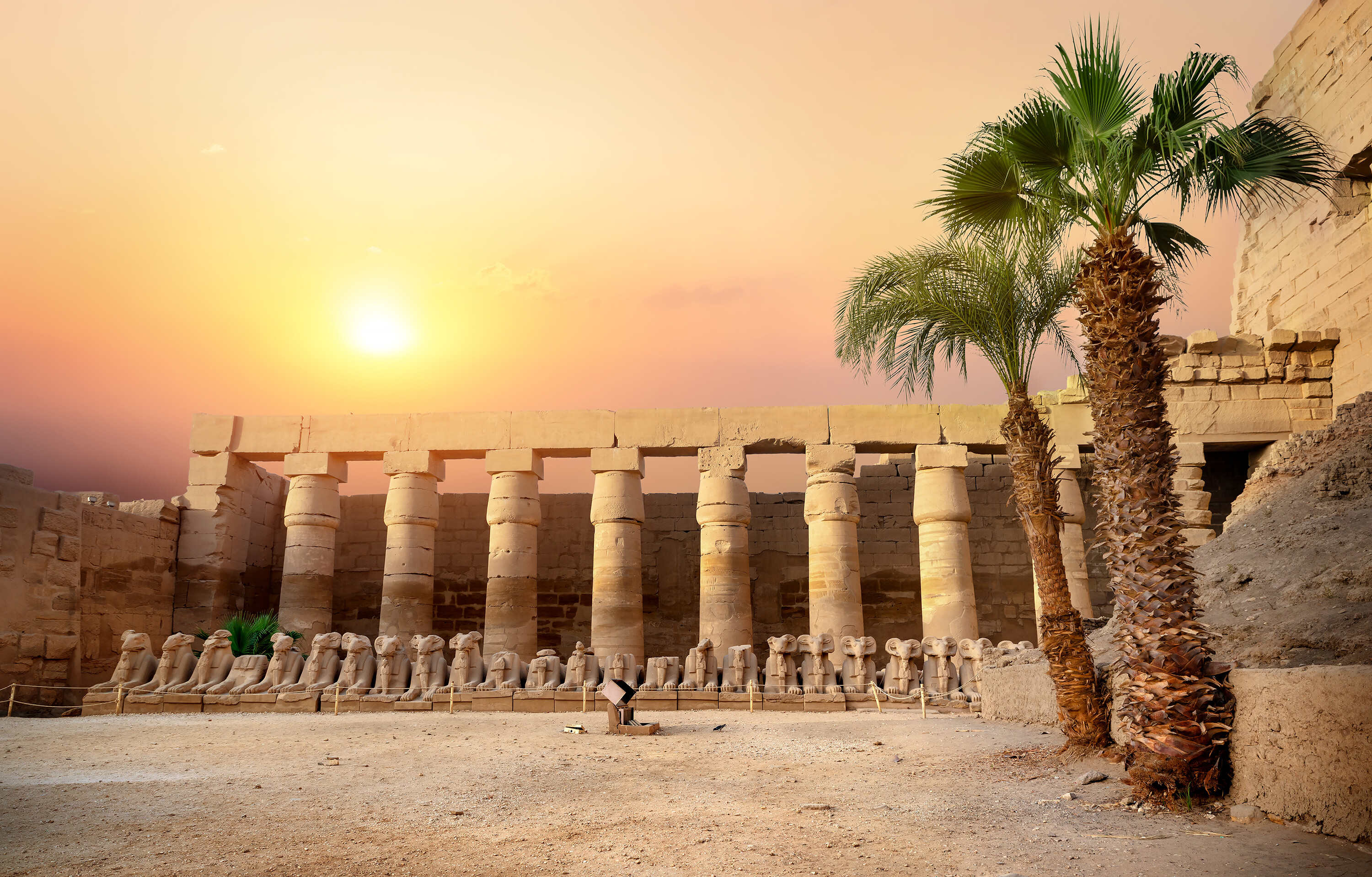
Why ancient Egyptians depicted people in profile
A family strolls through a quiet gallery, stopping in front of a monumental Egyptian mural. A young boy tugs at his parents’ sleeve and points to the figures marching across the wall. Their bodies face forward, yet their heads turn sharply to the side. “Why do they look sideways?” he asks, puzzled.
It’s a question countless museum visitors have asked and a perfect doorway into understanding one of the most distinctive visual languages in human history.

More Than Art: A Visual System of Belief
Ancient Egyptian art was never meant to be art for art’s sake. It functioned as a record of life, a tool for ritual, and a bridge between the living and the divine. Walls of temples and tombs became vast canvases illustrating sacred myths, ceremonial duties, political triumphs, and scenes of everyday life. Every line and proportion followed established rules that had endured for centuries.
Among these conventions, the composite or “mixed” perspective—faces and legs presented in profile while eyes and torsos appear frontally—stands out as the hallmark of Egyptian identity. Far from arbitrary, this distinctive mode of representation reflected the Egyptians’ understanding of the soul and the requirements of the afterlife.
The Spiritual Logic Behind the Profile
Central to Egyptian belief was the concept of the ka, a person’s spiritual essence that could dwell in images. For the ka to recognize its host, the representation needed to capture the key features that defined a person.
A profile view emphasized the contours of the nose and mouth parts of the face that are most recognizable from the side. Meanwhile, the frontal torso revealed the chest and heart, seen as the seat of vitality and moral being. The forward-facing eye ensured the figure appeared alert, conscious, and eternally watchful.
This artistic system combined angles not for realism but for completeness. To the Egyptians, representing a person from the “most characteristic” viewpoints created a more truthful, enduring image that the spirit could inhabit for eternity.
Intentional, Not Primitive
For many years, Western observers assumed Egyptian artists depicted people in profile because they lacked the ability to show depth or three-dimensional form. Yet the sophistication of Egyptian sculpture, finely carved statues, monumental sphinxes, and well-modeled reliefs, demonstrates deep skill in portraying volume and shadow.
Egyptologists, including Rosa Pujol of the Spanish Association of Egyptology, have emphasized that Egyptian art was governed by strict rules. Each feature served a symbolic purpose. The goal was not to mimic what the eye sees in a moment but to distill an individual’s essence into a timeless, ideal form.
Likewise, the absence of linear perspective wasn’t a failure of technique. It was a deliberate choice that aligned with Egyptian social values. Artists arranged figures in carefully ordered rows or tiers, their sizes reflecting status rather than literal scale. Pharaohs appeared largest; servants and commoners were smaller. This visual hierarchy reinforced the divine and social order on which Egyptian society rested.
A Brief Artistic Revolution: Akhenaten’s Experiment
Not all pharaohs were content to follow tradition. During the reign of Akhenaten, Egypt experienced a radical artistic transformation. Breaking with centuries of convention, artists embraced a more naturalistic and expressive style. Akhenaten, his queen Nefertiti, and their children were shown in tender, informal moments—laughing, embracing, or playing beneath the rays of the sun-god Aten.
These images revealed elongated limbs, rounded bellies, and palpable emotional qualities never before seen in royal portraiture. For a brief period, Egyptian art reflected vulnerability and individuality rather than rigid idealization.
But this revolution faded quickly. After Akhenaten’s death, artists reverted to the traditional profile-based canon, restoring the familiar forms that had long embodied Egyptian religious and cultural ideals.
Why the Profile Endured
The persistence of the profile style across thousands of years speaks to its purpose. It allowed Egyptians to represent people not as they appeared in a fleeting moment but as eternal beings; recognizable, complete, and spiritually alive. In their view, art was a tool of permanence, ensuring memory, identity, and cosmic order continued far beyond a single lifetime.
As families today stand before ancient murals, they encounter not just stylized figures but a worldview. Those sideways heads and forward-facing torsos are messages from a civilization obsessed with continuity, visual assurances that life, spirit, and legacy can endure through time.
And in that quiet museum gallery, the curiosity of a child reminds us that the Egyptians succeeded. Their images still speak, still fascinate, and still keep their stories alive.
Share this:
- Click to share on Facebook (Opens in new window) Facebook
- Click to share on Pinterest (Opens in new window) Pinterest
- Click to share on X (Opens in new window) X
- Click to share on Telegram (Opens in new window) Telegram
- Click to share on Pocket (Opens in new window) Pocket
- Click to share on WhatsApp (Opens in new window) WhatsApp
- Click to share on Reddit (Opens in new window) Reddit
- Click to share on LinkedIn (Opens in new window) LinkedIn
- Click to share on Tumblr (Opens in new window) Tumblr
- Click to print (Opens in new window) Print

